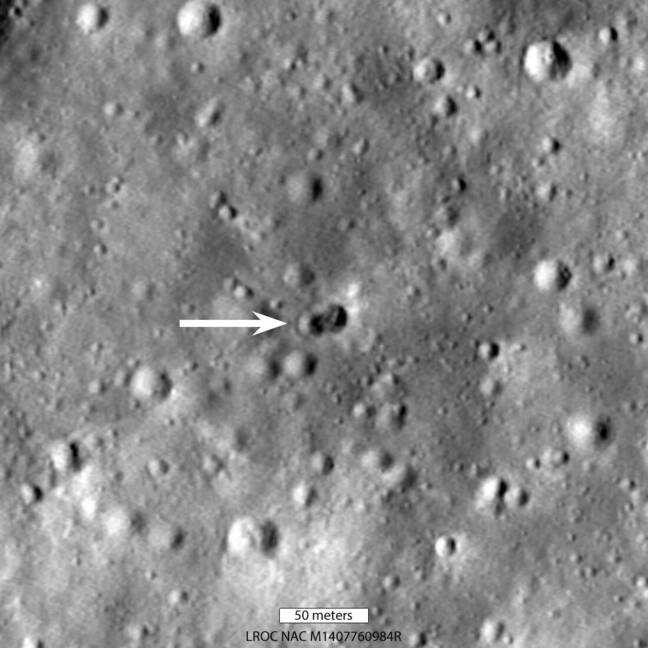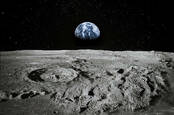Pic When place junk crashed into the Moon before this calendar year, it created not one particular but two craters on the lunar surface area, judging from photos exposed by NASA on Friday.
Astronomers predicted a mysterious item would strike the Moon on March 4 immediately after tracking the debris for months. The item was huge, and believed to be a invested rocket booster from the Chinese Countrywide Place Administration’s Extended March 3C car or truck that launched the Chang’e 5-T1 spacecraft in 2014.
The aspects are fuzzy. Area companies have a tendency to watch junk nearer to house, and never genuinely retain an eye on what could possibly be littering other planetary objects. It was challenging to validate the character of the crash gurus reckoned it would probably leave guiding a crater. Now, NASA’s Lunar Reconnaissance Orbiter (LRO) has spied telltale indications of an effects at the floor. Pics taken by the probe reveal an odd gap formed like a peanut shell on the surface of the Moon, presumably brought about by the Chinese junk.

The peanut-like craters … Graphic Credit history: NASA/Goddard/Arizona Condition College
“Astonishingly the crater is actually two craters, an eastern crater (18-meter diameter, about 19.5 yards) superimposed on a western crater (16-meter diameter, about 17.5 yards),” explained NASA. No other rocket overall body lunar collision has ever established two craters to our knowledge. The strange ditch suggests no matter what struck the Moon had a peculiar framework.
“The double crater was unforeseen and might reveal that the rocket entire body had massive masses at each and every end. Usually a used rocket has mass concentrated at the motor end the rest of the rocket phase predominantly is composed of an vacant fuel tank. Due to the fact the origin of the rocket human body continues to be uncertain, the double mother nature of the crater may well point out its id,” the American house agency extra.
Invoice Grey, a developer building computer software for professional astronomers, who 1st predicted the impression, mistakenly believed the object was a rogue component from SpaceX’s Falcon 9 rocket that launched NASA’s Deep Room Local climate Observatory. He afterwards altered his intellect and however believes it is from China’s Very long March 3C rocket.
“I’m a tiny puzzled by the double crater visual appeal. But I am in no way an specialist on superior-velocity impacts, apart from to know that they can have some extremely bizarre results. In any case, I’m incredibly delighted that the LRO people were being in a position to identify this,” he mentioned.
“I cannot say the double crater proves issues a person way or the other,” he explained to The Register. “That little bit is a head-scratcher. I do not believe this will notify us just about anything about no matter whether it is the Chang’e 5-T1 booster. We in essence have that nailed from other information and facts. And the selenologists, who know a good deal additional about crater development than I do, might occur up with a fully diverse rationale as to how a perfectly ordinary bit of rocket components could make twin craters.”
Wang Wenbin, a spokesperson for China’s Ministry of Overseas Affairs, denied the chunk of area junk was from the rocket that launched the Chang’e 5 spacecraft in 2020. “According to China’s monitoring, the upper phase of the Chang’e-5 mission rocket has fallen by way of the Earth’s ambiance in a secure method and burnt up completely,” he previously said in a statement.
But that rocket is not the similar 1 astronomers believe struck the Moon. Grey believes it was from a various vehicle, a single that released the Chang’e 5-T1 spacecraft in 2014. His predictions of exactly where the item may hit the Moon was off by a number of kilometers. “The actual effect site was uncertain by about a dozen kilometers, largely due to the fact our last observations were designed about four months just before impression,” he stated.
“The challenge was that spacecraft and place junk are carefully pushed by daylight, in a way that depends on how the objects are oriented as they tumble stop about end. It really is a small drive, but about the 4 months, we knew it could press the object a dozen or so kilometers a person way or the other, in a badly-established path. It’s a bit like predicting exactly where an empty trash bag will go in a windstorm. You know it’s going to get blown downwind, but not precisely where it’s going to go.” ®







